|
History Books The Corinda Library building, originally known as the School of Arts was built in 1895. The building was used as a hub for the Corinda community, and refurbished as a library by Brisbane City Council in 1966. The book designs represent the library as a store of this historic knowledge both literally and figuratively, with important historical dates inscribed on the spines. |
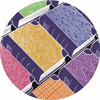 |
|
Gossia Gonoclada The species of plant Gossia Gonoclada known as the Angle-stemmed Myrtle, is a distinctive and endangered species of flora that grows in the Corinda area. The species is native to only the Moreton Bay Area, and Corinda represents the biggest population of Angle-stemmed Myrtle trees in Brisbane City. |
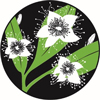 |
|
Flood Lines The Corinda area is a floodplain which brings challenges and opportunities. From the fertile lands, to the community spirit to rise above difficult of circumstances, there are two sides to this river. This design shows the shape of the Oxley Creek catchment and extends to the limits of the geographic flood maps that have had such profound effects upon the area. |
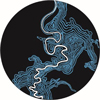 |
|
Black Cockatoo The Glossy Black Cockatoo is a native species of the Corinda area and classed as an endangered and vulnerable species. Its distinctive red tail is the inspiration with the red colour indicative of the danger it faces, as well as its own red plumage. The image of the Black Cockatoo is about to take flight to escape danger, and flourish in a sunset sky as a call-to-action for conservation efforts. |
 |
|
Building Communities The Corinda sawmill known as 'Brisbane Timbers Ltd.' was founded by David Lahey in 1911 and was an important economic institution in the area. The mills were integral to many significant projects, including the construction of Brisbane's trams. The patterns represent the way in which raw timber logs are milled, and the building of the surrounding community. |
 |
|
Crop Lands The Corinda area was used as farmland from the mid 1800s through to the mid 1900s. This design represents the life cycle of corn, a major crop grown in the area. The fertile soil of the area gives rise to the growth of the corn crop in four seasons interspersed with our year-round cycles of rain and sunshine. |
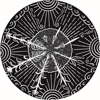 |
|
Two Fish Two of the local fish species, Flathead and Tilapia, are represented in this design. The image symbolically captures the intersection of Oxley Creek into the Brisbane River. Tilapia is the most populous fish species of Oxley Creek and Flathead are among the most common in the Brisbane River. Contrast is shown in the intersecting currents of both waterways, with the respective fish framed by their own flow lines between the currents. |
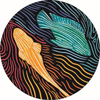 |
|
Train Tracks This design represents both the historical and modern significance of the train tracks to the Corinda area. The woodcut style of illustration uses various intersecting patterned forms to contrast the differing materials of steel, wood, and stone. |
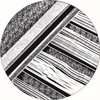 |
|
Belly Glider Five of the six Australian species of glider are found in the Oxley Creek Catchment. This design represents the distinctive folds of skin that are found on the bellies of gliders. Symbolically, the belly also represents an area of vulnerability and speaks to the need for vigilant conservation and protection of native species in the area. |
 |
|
Interwoven History This design comprises an interwoven pattern from the architraves of the historical Francis Lookout structure known as a ‘lych-gate’. This landmark was erected in 1902 by women’s suffrage activist Angela Francis as a memorial for her family. The two interwoven lines represent Angela and her husband and fellow activist Arthur, with a clover symbol for each of their five children. |
 |
|
Wetlands Aspect This design shows a view of the grasslands around the Oxley Creek Catchment and the waterway and the fauna therein. The Black Swan is shown here as a representation of the abundant bird life that populate the area, including over 170 bird species that have been seen in the past including the Spotless Crake, Pale-vented Bush-hen and White-headed Pigeon. |
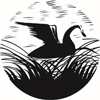 |
|
War and Peace The Corinda Library building, historically known as The Corinda School of Arts, is one of the most significant sites in Corinda. It was a place of community comfort during both World Wars, and the site of peace and memorial celebrations at their end. The transition from the strife of war to peacetime calm is depicted through the colours, symbols and lines in this design. The central space represents the building as a key place of community gathering and support. |
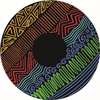 |
Corinda Library
Explore Corinda Library’s features, facilities and services. Attend an event at the library.

On this page
Contact details and opening hours
641 Oxley Road, Corinda Qld 4075 07 3407 7701Monday: Closed
Tuesday: 10am–5pm
Wednesday: 10am–5pm
Thursday: 10am–5pm
Friday: 10am–5pm
Saturday: 9am–4pm
Sunday: Closed
Closed on public holidays
Facilities and features
Creative lighting at the library
Near the ramp to the library entrance, a creative lighting gobo projector displays a series of artworks that reflect the past, flora and fauna, and cultural aspects of the Corinda area.
Location and parking
641 Oxley Road, Corinda Qld 4075
Where to park
Parking is available on surrounding streets.